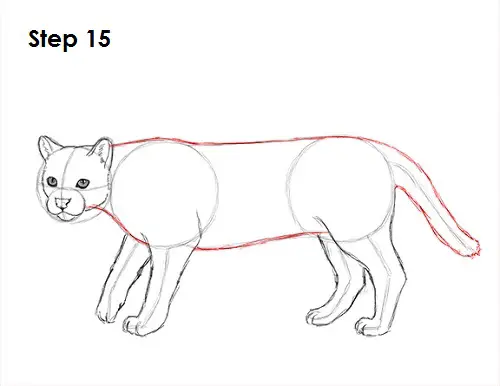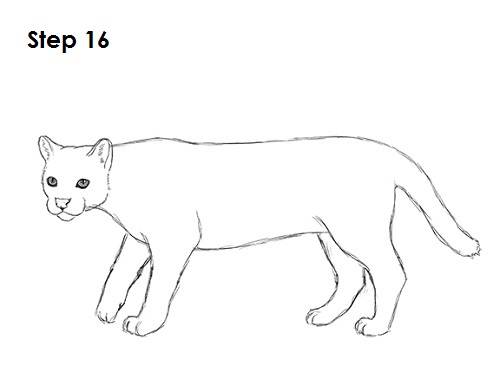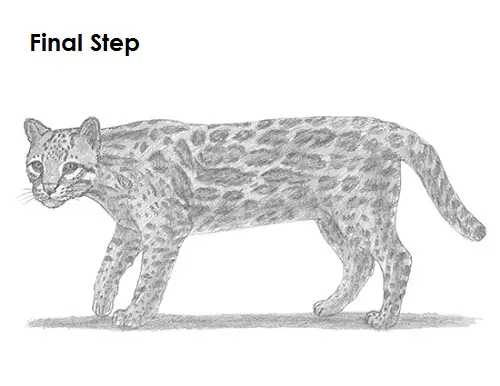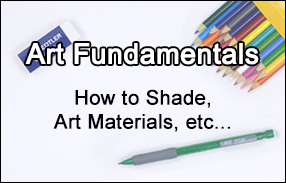Page 4 of 4



The coats of ocelots can vary greatly between individuals. Their coats consist of rosettes, spots, stripes and curved bands. The shapes on the coat tend to be smaller on the limbs and larger on the body, especially the back. Because the coat pattern varies so greatly, it's a good idea to use reference for a more accurate drawing. A lot of the time the rosettes along the back fuse together to form long bands with spots inside. The pattern doesn't have to look exactly the same as this. Just add different-sized bands across the ocelot's entire body. The shapes are bigger and thicker on top and are small and more like spots down by the limbs. Remember to pause the video to draw at your own pace.
You can add more value throughout your ocelot drawing for extra detail. The area around the eyes and muzzle are pretty pale, so don't add value there. Add a solid value to the rest of the body. It's okay to go over the pattern. Make sure this value is a lot lighter than the value used for creating the pattern. Using a value darker than the previous step but lighter than the pattern, shade the insides of the rosettes and bands. Vary the pressure on your pencil to get different degrees of tonal value. Consider the light source as you shade so that the shadows remain consistent throughout the body. Adding the coat pattern can be very time consuming, so be patient, take breaks and do small sections at a time.
Add a cast shadow underneath. This helps ground the ocelot so it doesn't appear to be floating. Use a dark value near the middle of the shadow and a lighter value along the edge for the shadow's diffusion.
Thanks for watching! Subscribe to the How2DrawAnimals YouTube Channel for a new tutorial every Tuesday.
To learn how to draw popular cartoon characters, visit EasyDrawingTutorials.com.







